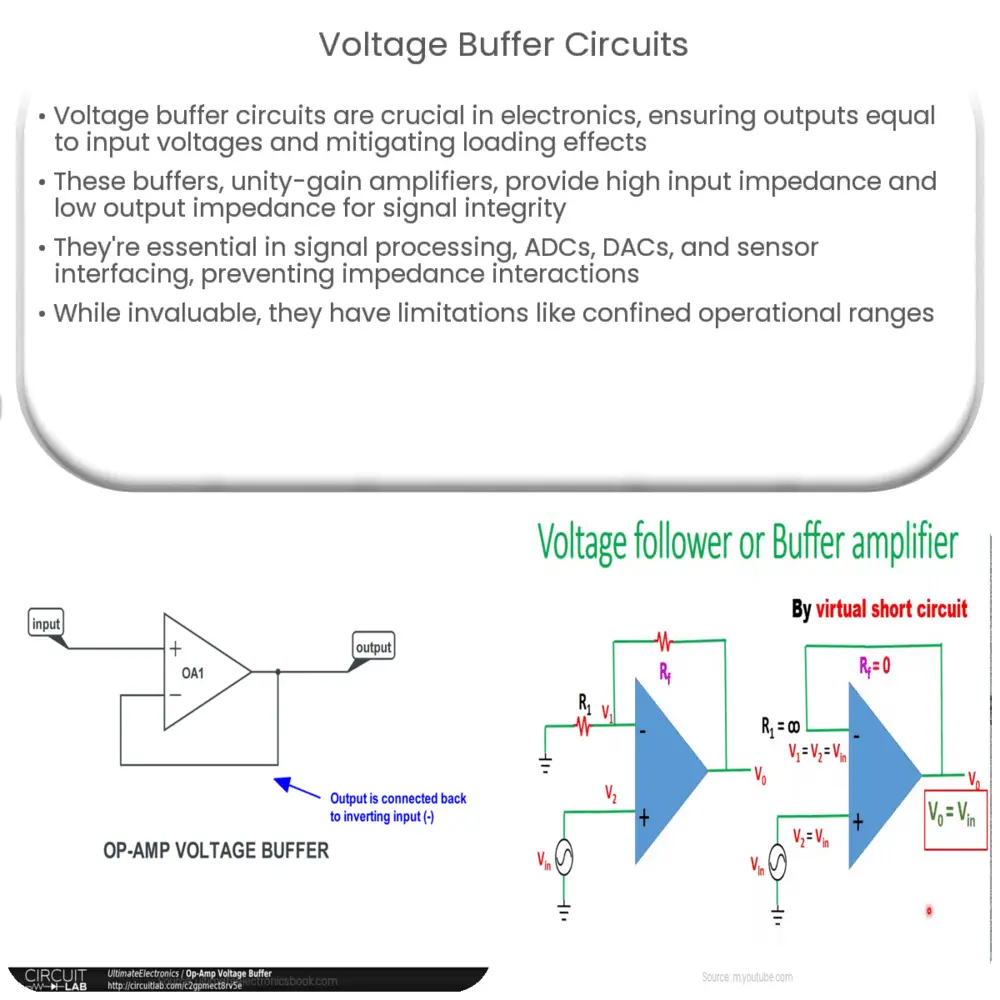Explore the world of Voltage Buffer Circuits, their design, function, applications, and their significant role in electronics.

Voltage Buffer Circuits
A Voltage Buffer Circuit is a significant element in the world of electronics. It’s an op-amp circuit which has the potential to provide an output that is equal to the input voltage. These circuits play an essential role in signal processing and are known for their ability to mitigate loading effects.
The Functionality of Voltage Buffer Circuits
Voltage buffers, also known as unity-gain amplifiers or voltage followers, are designed to provide an output voltage that is the exact replica of the input voltage but with a high input impedance and low output impedance. This particular characteristic makes them an optimal choice for impedance matching, preventing signal source loading, and maintaining signal integrity.
- High Input Impedance: This is one of the crucial features of a voltage buffer. It allows the buffer to draw negligible or no current from the signal source, which helps prevent loading effects.
- Low Output Impedance: The low output impedance makes the buffer capable of supplying relatively high current to the load without significant voltage drop. Hence, it ensures the transfer of the correct voltage level to the next stage.
The Significance of Voltage Buffers in Real World Applications
Voltage buffers are integral components in many electronic applications. Their capability to preserve voltage signals without distortion is especially valuable in signal processing circuits, Analog-to-Digital Converters (ADCs), Digital-to-Analog Converters (DACs), and in sensor interfacing where it’s crucial to maintain the accuracy of the signal. Additionally, in multi-stage amplification circuits, voltage buffers can be used between stages to prevent impedance interaction between the stages.
Commonly Used Voltage Buffer Circuits
- Op-Amp Voltage Buffer: This is the most commonly used type of voltage buffer, which utilizes an Operational Amplifier (Op-Amp) in a unity-gain configuration. It’s designed so that the output voltage follows the input voltage, hence its name ‘voltage follower’.
- Emitter Follower: This is a type of bipolar junction transistor (BJT) amplifier configuration. The output is taken from the emitter terminal of the transistor, and it follows the input voltage applied at the base, albeit minus a small voltage drop across the base-emitter junction.
The design of the voltage buffer circuit varies based on the specific requirements of the application. It can either be a single transistor stage like an emitter follower or a more complex circuit involving operational amplifiers.
Design and Operation of Voltage Buffer Circuits
The designing of a voltage buffer is usually straightforward. As mentioned, it can be a simple circuit with a single transistor or an op-amp. The op-amp configuration is preferred due to its high input impedance and low output impedance. It is set in a closed-loop configuration, with its output connected to the negative input, creating a feedback loop. This arrangement causes the output to follow the input.
The Caveats of Voltage Buffers
While voltage buffers offer significant advantages, they are not without limitations. For instance, the operational range of a buffer is confined within its supply voltages. An op-amp buffer will not be able to output a voltage higher than its supply voltage or lower than its ground reference. Furthermore, while ideal buffers are expected to have infinite input impedance and zero output impedance, real-world buffers deviate from these ideal parameters. It’s critical to understand these caveats while designing and using voltage buffers.
Voltage Buffers in the Digital World
In the digital domain, voltage buffers also have a noteworthy role. For example, they are used in interfacing between different logic families with differing voltage levels. A voltage buffer can ensure that a digital signal from one logic family is correctly interpreted by another.
Conclusion
In conclusion, voltage buffer circuits are indispensable tools in electronics, used extensively for signal processing and multi-stage amplification systems. They serve a critical purpose in maintaining signal integrity by providing high input impedance and low output impedance, thereby preventing unwanted loading effects and impedance interactions.
Despite certain limitations, their role is undeniably essential, extending from basic electronic circuits to sophisticated digital systems. A firm understanding of voltage buffer circuits can greatly enhance the design and performance of electronic systems, contributing significantly to the progress of technology in this fast-paced digital world.

